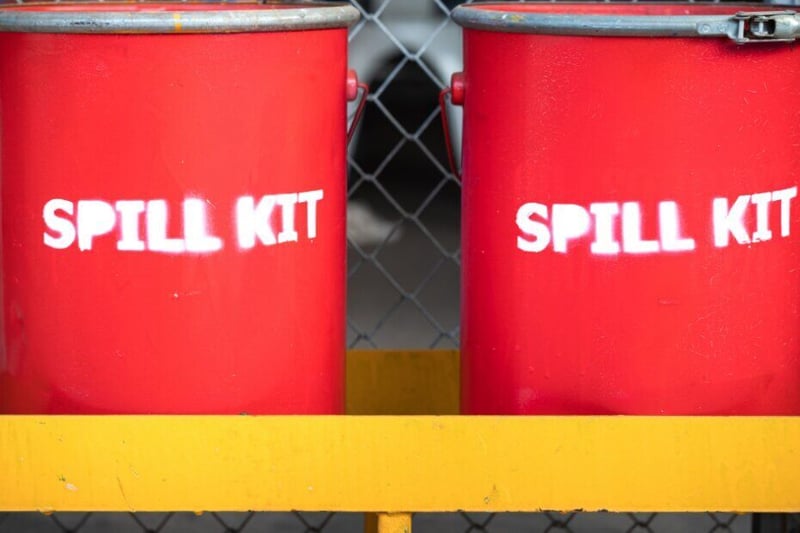Why You Should Always Have a Spill Kit on Site
Written by: Josh Maraney Save to Instapaper
Spills happen. Whether it’s at a warehouse, fuel station, mechanic’s workshop, or even a school lab, things can go wrong. When liquids like oil, fuel, chemicals, or even water are spilled, it’s important to clean it up fast and properly. That’s where having a spill kit nearby makes all the difference.
Accidents Aren’t Planned
Spills don’t follow a schedule. One minute everything is fine, the next there’s a pool of oil under a machine or a drum tipping over in the back of a bakkie. It’s not always someone’s fault. That’s why planning ahead by keeping a spillage kit ready is just smart thinking. These kits are made to deal with different types of spills depending on the liquids used at your site.
What’s Inside?
Most kits include things like absorbent pads, socks, gloves, disposal bags, and a guide on how to use the contents. The idea is to stop the liquid from spreading, absorb what’s there, and dispose of it the right way. Some kits are made for oil, some for chemicals, and others for general use. Choose one that suits the materials you store or work with.
Easy to Use, Even for First-Timers
No one wants to read a manual while liquid is running across the floor. That’s why spill kits are packed in a way that’s easy to follow. The items are grouped logically, and most steps are printed right on the bag or bucket. Anyone in the team should be able to handle the clean-up without extra tools or guesswork.
Keep One in Every High-Risk Area
You don’t have to be running a big warehouse to need one. Even smaller operations like mobile mechanics, home workshops, or school science rooms can benefit. If you store oils, paints, fuels or cleaners, it’s safer to have a kit close by than to scramble when something goes wrong.
It’s About Safety and Clean-Up
Slippery floors can cause falls. Leaking chemicals can hurt people or damage property. A quick response makes a big difference. Clean-up should be fast, safe, and tidy. Using cloths or paper towels just spreads the mess and leaves a bigger problem behind.
Legal and Environmental Reasons
Besides safety, spills can harm the environment. If oil leaks into a drain or soil, there might be fines or bigger problems later. Many sites are now expected to have a plan in place. Keeping a proper kit shows that you take your responsibility seriously. That goes a long way during inspections or safety audits.
Portable and Refillable
Some kits come in bags that fit under a seat or in the back of a ute. Others are packed into bins or wall-mounted boxes. Once used, they can be topped up again. This keeps costs low and helps teams stay ready without buying a new set every time.
What to Do After Using It
Once you’ve cleaned up the spill, the used items go into special disposal bags included in the kit. These must be thrown away properly. Don’t mix them with regular rubbish. If the kit is missing items afterward, make a note and replace what’s needed right away.
Train Your Team
Even the best kit won’t help if no one knows how to use it. Show staff what’s in the kit, where it’s kept, and how to respond. A short training session or poster near the kit can help people act quickly when needed.
Wrap-Up
A small spill can turn into a big issue if left alone. Having the right gear on hand can prevent damage, protect staff, and save time. Whether you’re on a construction site, workshop, or farm, keeping a proper spill kit nearby is a simple step that brings peace of mind.
Submitted on behalf of
- Company: Afrisupply
- Contact #: 0828881687
- Website
Press Release Submitted By
- Agency/PR Company: Top click media
- Contact person: Josh Maraney
- Website
Get new press articles by email
Top Click is one of South Africa’s leading full-service digital marketing agencies. Our custom-built, cutting-edge solutions are targeted to help you attract customers, convert leads and grow your business. From SEO and Google Ads to social media marketing and digital design, our measurable marketing campaigns deliver results – and ensure that, in a cluttered online marketplace, you rise... Read More
Latest from
- Choosing the Right Pet Food for Your Animals
- Managing Contracts With Simpler Tools
- New Website to Keep Up with the Demand for Online Pet Food Delivery in South Africa
- Machines That Make Packaging Easier
- The Role of Transit Solutions in Modern Connectivity
- How to Get Cheaper Car Insurance Without the Stress
- Making Radiology Workflows Simpler with the Right Tools
- Reduce Late Payments with These Practical Tips
- A Simple Guide to Choosing the Right Forklift for Your Business
- Keeping Your Car in Good Shape with the Right Services
- Why Property and Asset Valuations Matter
- Finding Quality Engines and Scrap Yard Services
- Practical Guide to Rooftop Tents
- Practical Uses of Vehicle Awnings
- A Look at Engine Choices Across Popular Car Brands
The Pulse Latest Articles
- Education Is The Frontline Of Inequality, Business Must Show Up (December 11, 2025)
- When The Purple Profile Pictures Fade, The Real Work Begins (December 11, 2025)
- Dear Santa, Please Skip The Socks This Year (December 10, 2025)
- Brandtech+ Has 100 Global Creative Roles For South African Talent (December 9, 2025)
- The Woman Behind Bertie: Michelle’s Journey To Cape Town’s Beloved Mobile Café (December 9, 2025)
